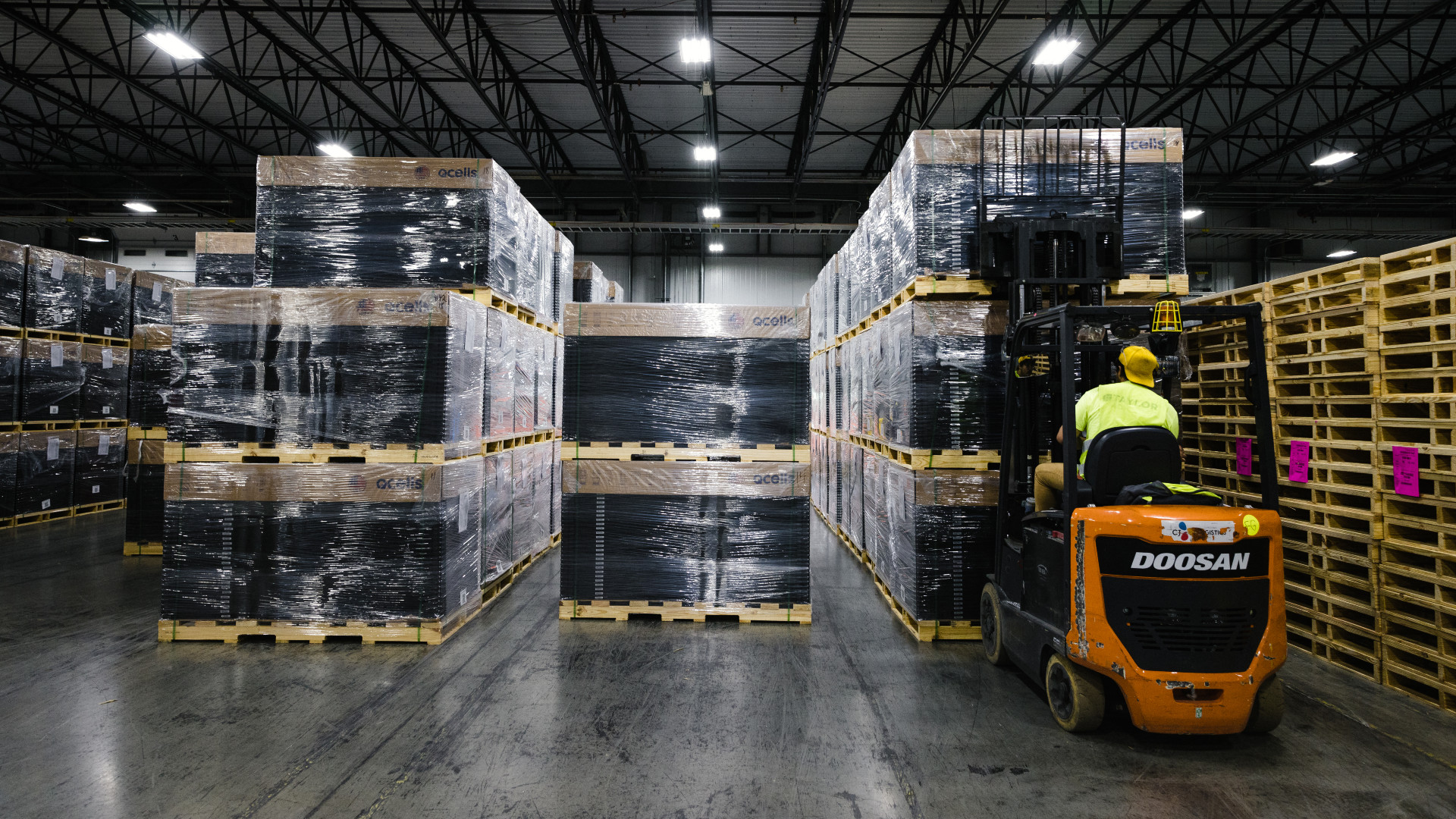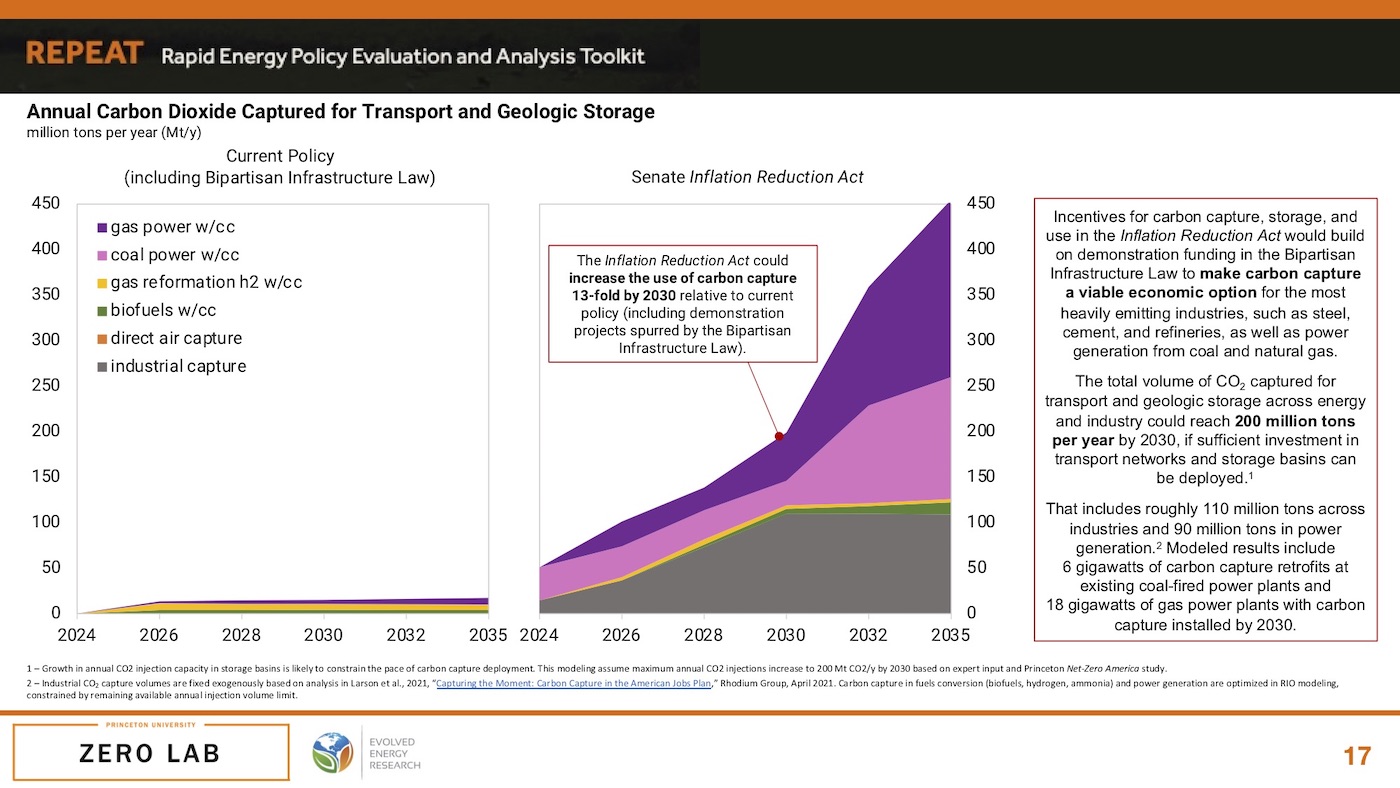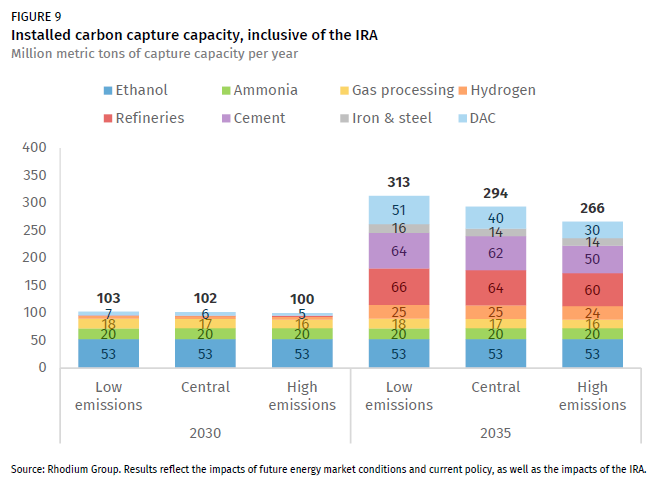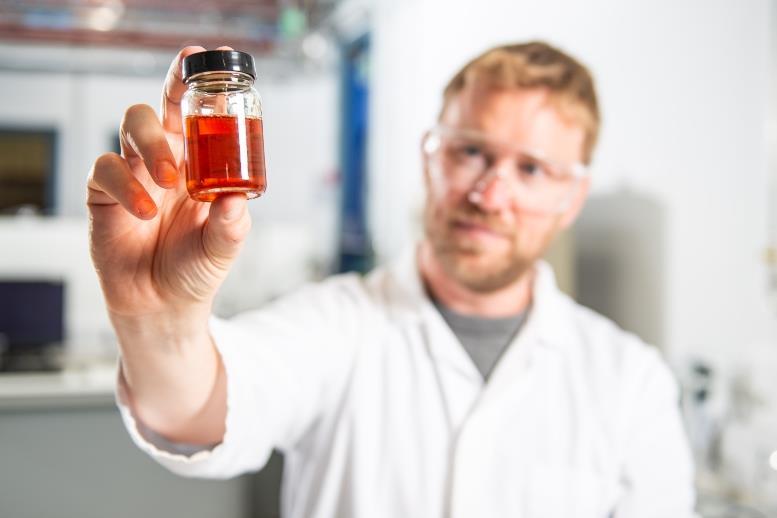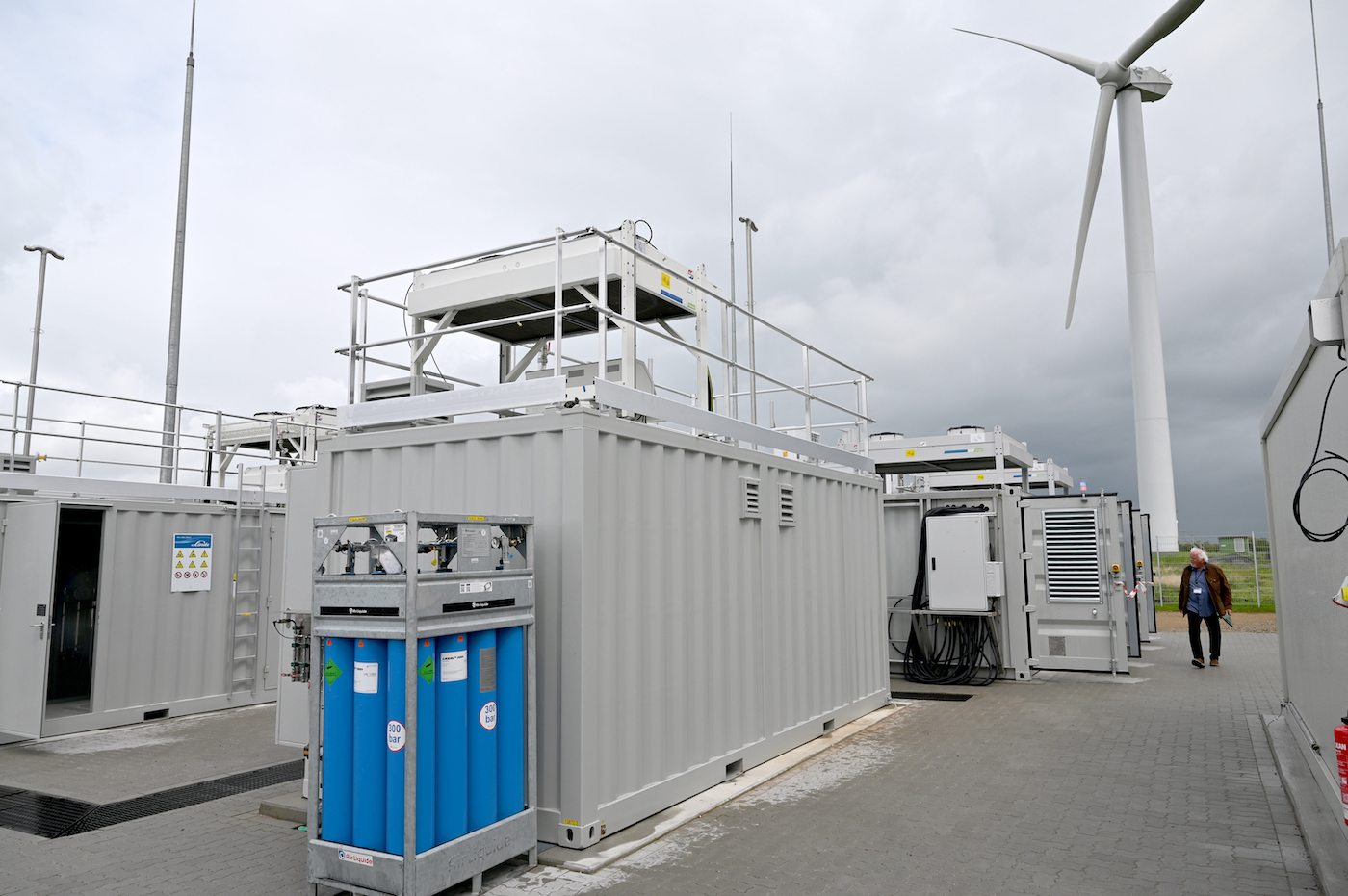by Renee Dudley
ProPublica is a nonprofit newsroom that investigates abuses of power. Sign up to receive our biggest stories as soon as they’re published.
Thomas van Ruitenbeek’s life fell apart in 2012, when a psychotic episode and a diagnosis of autism derailed his pursuit of a digital communication degree at a university in Utrecht, the Netherlands. For the better part of a year, the 25-year-old wouldn’t respond when spoken to, his father said, and his blue, wide-set eyes revealed little cognition. He rarely left his parents’ duplex and filled his time studying daily newspapers, convinced they contained secret messages. Sometimes, he worked up the energy to paint miniature figurines from the medieval fantasy-themed board game Warhammer. Mostly, he did nothing.
The psychotic episode and the autism diagnosis locked him into a state of isolation that had been deepening since his childhood, solidifying his long-held belief that he was an outsider. Van Ruitenbeek’s parents took him to appointments with doctors and therapists. When he grew strong enough, they supported his return to work. He did simple tasks — mostly cutting and packaging yarn — at a job he obtained through the local mental health department. That was a far cry from his earlier aspirations of being a video game designer and hardly the life his parents had hoped he would have. They worried about what would happen when they grew old and could no longer look after him.
Then, during a meeting with his coach at the mental health department in 2013, van Ruitenbeek and his parents got an unexpected bit of hope. A short distance away, a first-time entrepreneur named Peter van Hofweegen and his business partner were figuring out how to launch an education and job placement program geared toward autistic young adults who were interested in computers.
The number of people diagnosed with autism is hard to ascertain, but the statistics that are available suggest it’s on the rise. An estimated 100,000 autistic Americans turn 18 every year, according to Drexel University’s Autism Institute, and a growing number of programs in the U.S. and elsewhere aim to employ tech-savvy autistic people.
But van Hofweegen’s program was something different. He and his partner sought primarily to recruit socially isolated, seemingly unemployable dropouts who almost certainly would be passed over even by employers who welcome candidates with neurological differences like autism. They wanted people who couldn’t make it on their own and had been “sitting for years in their parents’ homes,” van Hofweegen said. The number of students in his program would be small, but the stakes were large. If they could be doing meaningful, sophisticated work, what kind of a model might that provide for the uncounted numbers of people with autism around the world seemingly sentenced to constricted, unproductive lives.
The untested model drew skepticism even from other autism advocates, who viewed it as well-intentioned but overly idealistic. But van Ruitenbeek’s coach, Anita de Winter, saw it as a godsend. She had worked with hundreds of autistic adults who struggled to find meaningful work and become independent. De Winter described the program to van Ruitenbeek without betraying her enthusiasm. She didn’t want him to be disappointed if it didn’t work out.
“This might be for someone like you,” she told him.
Van Hofweegen’s path to autism advocacy traces back to 1996, when his first child was born. The boy, named Thijs, sustained an injury during birth and was diagnosed with cerebral palsy. Doctors told van Hofweegen and his then-wife that Thijs might never walk or talk. But with the help of specialists, he learned to both move and speak.
Peter van Hofweegen’s son Thijs
(Courtesy of Mathilde Dusol)
Thijs went far beyond that. After proclaiming a desire to learn how to swim at age 5, and taking seven years to pass his basic swimming test, Thijs persisted through intermediate and advanced levels alongside much younger classmates. When he swam the 50-meter freestyle test to pass the advanced level, he earned a standing ovation from the other students’ parents. Van Hofweegen never forgot that moment. (He continued to ponder it even as Thijs developed into a competitive swimmer and won a silver medal in the men’s 400-meter freestyle at the Paralympic Games in 2016.) It showed what a person could accomplish with the right support and accommodations.
While helping out at an event in 2012 for people struggling with unemployment, van Hofweegen met Frans de Bie, an IT guru and fellow volunteer. A year earlier, de Bie had sold his 40-person tech company. Like van Hofweegen, de Bie drew inspiration from his personal life. He had grown up alongside foster siblings, and he understood the transformative power of a supportive environment. He also was motivated by his son and daughter, who have dyslexia.
The new friends hit upon an idea. Van Hofweegen had read a survey saying 20,000 Dutch people were not participating in the workforce because of their autism. Perhaps they could start an organization that would help autistic people interested in technology to find work. After more than 25 years in management roles at hotels and at a temporary-job placement agency, van Hofweegen quit his job. A short time later, in late 2013, he and de Bie incorporated an organization they called ITvitae.
Van Hofweegen, left, with Frans de Bie
(Thana Faroq for ProPublica)
The Dutch have a saying: “God created the earth, but the Dutch created the Netherlands.” That’s because for centuries, the country’s citizens reclaimed land from the North Sea using their iconic system of dikes, canals and windmills. About a third of the country’s fertile land is below sea level. The Netherlands, half the size of South Carolina, remains among the world’s leading economies in part because its people have maximized its geographical resources.
And so it was culturally ingrained in van Hofweegen and de Bie to maximize the country’s human resources. Partly because de Bie was familiar with the unmet demand for IT jobs in the Netherlands, a gap currently estimated at 100,000, and because the country has a robust tech sector, the co-founders wanted to focus on that area.
The two men saw ITvitae — the name is an amalgam of “information technology” and “curriculum vitae,” which they pronounce ee-tay-vee-tay — as a way to fill tech-sector jobs and strengthen the Dutch economy as much as they considered it a social enterprise to lift up autistic people who felt excluded from the job market.
Common traits found in autistic people often prevent them from being hired or even applying to jobs in the first place. They may struggle to interpret social cues, pause frequently when speaking, exhibit disruptive eccentricities or avoid eye contact. Yet employers have found that other characteristics make them excellent employees. They tend to be thorough and fastidious, have the ability to go deep on specific topics and focus for prolonged periods of time. Those traits lend themselves to careers in technology and cybersecurity, among many other fields.
Van Hofweegen and de Bie envisioned a six-month course focused on preparing students to be software testers — a natural fit for autistic people, who tend to be methodical rule-followers. As the students embarked on coursework, van Hofweegen would find employers by cold-calling IT and software companies as well as by tapping the connections of his board members.
The co-founders believed ITvitae could generate revenue primarily by charging employers a recruiting fee for each hire. De Bie believed employers would be willing to pay because the amount he proposed was less than the typical cost of specialized, third-party technical training for new or existing employees.
The first challenge was finding students. After winding their way through various government agencies, van Hofweegen and de Bie found de Winter, who worked near where they lived. “Do you know these types of people?” van Hofweegen asked her in 2013 after laying out the vision for ITvitae. She replied, “How many do you want?”
As the co-founders prepared to interview about 30 candidates for 11 slots, de Winter explained the potential pitfalls. Autistic people tend to process language literally, she told them, and might be unable to respond to classic prompts. The question “what do you hope to get from your time at ITvitae?” might elicit a blank stare. That’s because, to an autistic person, there’s no basis for what the outcomes of the new program might be. Alternatively, the list of answers could be endless and paralyzing. They needed something concrete and technical to discuss. So de Bie concocted a simple tool that would serve as a discussion topic and gauge applicants’ computer interest: He asked the candidates to draw maps of their home computer networks and be prepared to describe them.
Van Hofweegen and de Bie were full of enthusiasm. But, as they continued to talk with de Winter, they realized how much they still had to learn about the very people they wanted to help. They were, perhaps, in over their heads.
For as long as he could remember, van Ruitenbeek knew he was different but felt that he couldn’t let other people know that. It was as if he were “living undercover,” he said. He was constantly afraid that asking the wrong question would cause him to be bullied, so he never asked questions. While his twin sister played with other children, he withdrew to solitary activities, learning to design his own websites on topics ranging from outer space to dinosaurs. But his life took a darker turn after his psychotic episode in Utrecht.
Van Ruitenbeek had planned to spend the summer day catching up on coursework when suddenly he began to feel that he was outside his own body. His vision narrowed and his mind compelled him to follow what he believed were secret hand signals made by strangers, which eventually directed him to a bar to order a draft Heineken. He then lurched outside the bar in a stupor. Van Ruitenbeek rambled in halting, slurred speech when his sister and father reached him by phone. Frantic with worry, Henk van Ruitenbeek drove through Utrecht and eventually found his son standing on a sidewalk, staring vacantly. He got him in the car and took him home.
In the aftermath, with a new diagnosis of autism, van Ruitenbeek believed his life was over. He had thought it was not rational or even possible to set goals for himself. Then de Winter mentioned ITvitae, and he knew he badly wanted a slot there. The ITvitae interview, he later said, was “like a ticket out of my situation.” More nervous than he had ever been, he told himself: “I have to make it. I have to do my best.”
The interview, which took place in late 2013, was difficult for everyone. Although van Hofweegen and de Bie were pleasant and upbeat, van Ruitenbeek felt he was in “hostile territory.” Then again, everything beyond his parents’ home seemed that way at the time. He stuttered severely when describing his recovery from psychosis, and it took him an uncomfortably long time to utter a single sentence. He was visibly perspiring. “This isn’t working,” de Bie thought.
When de Bie pivoted to the network drawing and other technical questions, the interview shifted. Van Ruitenbeek stuttered less. De Bie, impressed by his remarks about website design, decided before the interview ended that van Ruitenbeek should have a space at ITvitae.
De Bie thought it was obvious that van Ruitenbeek — and most of the other candidates — had raw computer talent. Van Hofweegen welled with tears. “What are these wonderful people doing at home?” he wondered.
Advocates for people with autism in the United States often ask the same question. Parents of autistic teenagers describe the “cliff” of high school or college graduation, marked by the struggle to navigate the transition from years of special education and support to independent working life. Firm data is hard to come by, but some estimates suggest millions of autistic American adults are unemployed or underemployed. Of those who find work, most are in low-wage and part-time jobs, according to Drexel’s Autism Institute.
At the same time, demand for workers with technical skills has far outpaced supply. In the cybersecurity field alone, the U.S. faces a shortfall of more than 225,000 workers, according to CyberSeek, an organization that provides job market data. The number of available tech-related jobs in the U.S. nearly doubled from 2020 to 2021, analytics company Datapeople reported.
Over the past decade, a variety of opportunities for austistic adults in the U.S. — ranging from technical training and job placement programs in various cities, to targeted hiring and retention efforts at large employers — have aimed to bridge the tech workforce gap. But the results so far have been modest, said Michael Bernick, a San Francisco-based attorney who has written two books on employment strategies for the neurodiverse.
That’s partly because many initiatives expect job candidates to have higher education, credentials and the ability to work with minimal support, said Bernick, who was director of the California labor department from 1999 to 2004. “They are looking for people who have significant tech skills,” he said. “Of that group, not all are college graduates, but they’re also not the long-term unemployed, sitting in their parents’ basements.” Someone like van Ruitenbeek wouldn’t have stood a chance.
One widely publicized initiative is the Neurodiversity @ Work Employer Roundtable, a collection of about four dozen private employers — including Microsoft, SAP, Google and more — that foster neurodiversity hiring programs. Participating companies offer screening and interview processes to accommodate autistic candidates; about 1,200 neurodiverse candidates have gotten jobs with Roundtable employers over the past decade, said Neil Barnett of Microsoft, a leader of the group. Barnett, who has discussed the initiative with Bernick, hopes that Roundtable employers will continue to expand their hiring of neurodiverse candidates with a variety of skills, including outside of tech.
Autistic adults who are interested in computers represent just a sliver of autistic job seekers, according to the national advocacy organization Autism Speaks; Bernick puts the figure around 10% to 15%. Due in part to prominent figures such as Elon Musk, who has said he has Asperger’s syndrome, which is now considered a type of autism spectrum disorder, and pop culture caricatures of socially awkward workers in Silicon Valley, the notion that autistic people inherently possess extraordinary tech competencies has become a cliché. Bernick said he once had hopes of a tech career for his own autistic son. But his son had neither uncommon skills nor a deep interest in computers.
While the 10% to 15% estimated by Bernick may seem like a small slice relative to popular perception, efforts to employ that group are nonetheless important, especially given the dramatic need in the tech sector, advocates and researchers said. Bernick said programs in the U.S. should expand their efforts to find autistic job seekers who have computer capabilities but lack the credentials — precisely the types of people van Hofweegen and de Bie recruited for their inaugural class.
In February 2014, after a six-month stint cutting yarn, van Ruitenbeek rode his bicycle to ITvitae’s space for the first day of class. He was nervous. In social settings, he always felt as though he were “from another planet,” he said. Here, though, he was surrounded by people who felt the same way.
Shortly after their arrival, de Bie assigned the students to assemble the furniture they would be using. When he returned several hours later, he found they had put it together flawlessly. He asked how everyone was getting along and discovered that none of the students had bothered with introductions. De Bie was surprised and amused; he was still learning how autistic people function.
Van Ruitenbeek and other students in ITvitae’s first class assemble furniture.
(Courtesy of Frans de Bie)
Van Hofweegen and de Bie, who refused to use the word “disability,” told the students they had “different operating systems” than the neurotypical people they grew up with. It helped to reassure them that they belonged in the classroom, and eventually the workplace, as they all began to “learn how to learn again” following what for some was years away from school, van Hofweegen said. De Bie eased the students into a school setting by leading a training on basic Microsoft programming, networking and security. That was followed by a 40-day course on software testing offered by an organization that issues certifications for technical specialties in the Netherlands.
After only a short time, van Ruitenbeek said he began to feel “at home for the first time in my life.” He enjoyed his coursework and excelled at it. He gradually began interacting with other students as he felt more at ease and less afraid of making social mistakes. When he grumbled about commuting by bike, a classmate offered to drive him to and from ITvitae. Van Ruitenbeek gladly accepted.
Yet, for all his progress, van Ruitenbeek continued to face obstacles. Conversation remained difficult due to his stutter, and he lacked the energy to work the 32-hour week that most employers expected of ITvitae’s graduates. Sometimes his father worried it was all too much for him. He was one of three students for whom van Hofweegen struggled to find a job.
When the coursework drew to a close, the students took a formal exam to be certified in software testing. Van Ruitenbeek breezed through the questions, except for one that confounded him: None of the multiple choice answers were technically correct. So he selected the answer that he suspected the test-maker wanted. He picked correctly and scored 100%. “It was my first achievement,” van Ruitenbeek said. “I could do something.”
A short time later, a director from the testing company visited ITvitae and van Hofweegen told him that a student had spotted a mistake in the exam. Van Hofweegen, who has an uncanny ability to sense an opportunity and pounce, suggested that van Ruitenbeek could be a test reviewer. The company invited him to join a small group of volunteers who look over exams for accuracy and clarity. Van Ruitenbeek readily agreed. To prepare, he plowed through a textbook on ethical hacking.
The work led him to his next self-discovery: Ethical hacking was fun. Once unable to set goals for the future, van Ruitenbeek now dreamed of a career in cybersecurity. He would hunt for hidden vulnerabilities in software and networks, and prevent them from falling prey to malicious hackers.
Following the success of their first class, van Hofweegen and de Bie recruited another class, then another, each with a maximum of 14 students. After the first year, with steady revenue generated mainly from fees paid by employers, the co-founders began taking salaries, and they hired additional staff. ITvitae’s mission spread to autistic job seekers and their supporters across the Netherlands.
As the organization grew, van Hofweegen and de Bie relocated ITvitae to a floor in a former monastery, which had been converted into offices. The founders thought its tree-shaded walking paths and seclusion would impart a serenity that the students needed. The organization also began offering new courses in software development, data science and cybersecurity, all specialties in high demand. Students delighted in being able to focus exclusively on topics that fascinated them, a luxury — for many of the students, a necessity — that traditional educational settings couldn’t provide.
Certain similarities emerged among ITvitae’s students. Before joining, nearly half had been sitting at home, unemployed and socially isolated, for longer than two years. Many passed the time playing video games and lost track of whether it was day or night. They told van Hofweegen and de Bie they felt worthless and never fit in; many reported having been bullied and struggling through periods of depression.
ITvitae turned away about two-thirds of applicants, most frequently because of untreated mental health issues. Other candidates simply weren’t ready. One 2022 applicant said he hadn’t left his home for 10 years and spent most of his time gaming. “It was such a big thing for him to be here” for the interview, de Bie said. “But then traveling regularly, studying in a group, doing exams — that would have been too heavy for him. I had to tell him it’s not the right time.”
Male students at ITvitae outnumber female students 10 to 1, both because autism is more prevalent in men and more likely to go undiagnosed or misdiagnosed in women. Many experience sensory challenges, such as headaches if the light is too bright or if there’s too much noise. One student was distracted by the sound of blinking eyelashes. Most struggle to varying degrees with communication.
To help both prospective employers and job candidates work through the inevitable miscommunications, ITvitae staff members accompanied students to job interviews. Saskia Meeuwessen, who was hired as the CEO of ITvitae as it expanded, recalled joining a student at an interview for a cybersecurity job with the Dutch National Police. The interviewer asked the candidate to introduce himself. The student froze: It wasn’t a question he had practiced. Nonetheless, he was later invited for a second meeting with an interviewer who was more experienced in interacting with autistic people.
That interviewer sat down and, with no social niceties, asked, “When I type www.google.nl, what happens?” Meeuwessen thought to herself, “Well, Google shows up, what a silly question.” But the candidate had a completely different reaction, launching into nuanced details about internet servers and connections. For 90 minutes, Meeuwessen “sat there, listening to stuff that I really didn’t understand,” she said. The candidate was hired on the spot.
Thanks in part to its gradually sloped coastline, the Netherlands is a popular landing spot for the underwater fiber optic cables connecting the United States and Europe. Fast, reliable and inexpensive internet connectivity has fostered a flourishing tech sector. But that connectivity has negative consequences, too. Hackers who can’t rely on the fragile internet connections in their home countries use servers in the Netherlands to commit crimes.
To counter these hackers, the Dutch National Police established an elite force called the High Tech Crime Unit, or HTCU. The unit has become renowned both for its success disrupting the operations of cyberattackers and for its innovative culture, which for years has included hiring unconventional candidates, including those with autism.
In 2017, at van Hofweegen’s urging, the HTCU brought on a graduate from ITvitae. He proved to be an open-source intelligence wizard. Another graduate followed. Then the floodgates opened, and about 30 ITvitae graduates were eventually hired to jobs in regional police squads, where they handle data analysis, digital forensics and other technical specialties.
The National Police’s embrace of a neurodiverse workforce extended beyond its partnership with ITvitae. Its most renowned hiring initiative for autistic employees began with a 2016 murder case.
A 50-year-old Turkish man had been shot more than 30 times in the Dutch city of Leiden and died two days later. The National Police collected surveillance camera footage and quickly identified the suspects. Their work also seemed to link the murder to a number of cold cases in Amsterdam. The National Police took over those investigations, inheriting 1,700 hours of camera footage. Watching the tapes was a marathon of drudgery that none of the National Police detectives wanted to take on.
One National Police detective, Jory de Groot, happened upon an idea. De Groot, who has a foster brother with Down syndrome, volunteered with a group that organized trips for young adults with disabilities. On a weekend shortly after the murder, she led a group of people with autism. De Groot, then 26, described her job to one participant on the trip and mentioned the painstaking work of watching security footage. Some autistic people excel at recognizing small details, the woman told de Groot. They might love the very task that neurotypical detectives loathe.
De Groot then contracted four people from AutiTalent, a Dutch job placement organization for autistic people. She prepared her colleagues, advising them against asking typical get-to-know-you questions, and set up a radio-free office in a quiet corner of their building.
When the autistic contractors arrived, the National Police detectives tested their abilities by having them watch the footage collected in the Leiden murder. The detectives had already watched the tapes, which included the days leading up to the shooting, and knew precisely when the suspects would be seen on the day of the shooting.
Before long, one of the contractors spotted a suspect on the tape — but not when the detectives expected. The contractor found the suspect casing the crime scene the day before the attack. The detectives had missed it. “It was really important evidence that we overlooked,” de Groot said. Eventually, the two suspects were convicted in the Leiden murder.
As word of the feat reverberated through the National Police, requests for more AutiTalent contractors flooded in. Eventually, 50 autistic people were working as “camera footage specialists,” a newly created role, across the National Police. De Groot’s original team grew to six people, who increasingly talked with one another and with their police colleagues as they became more comfortable. The contractors joined detectives from the start of investigations, rather than stepping in after they were already in progress, and took part in briefings. Additional contractors from AutiTalent became “audio specialists,” who transcribed interrogations and wiretaps.
Jory de Groot, second from right, with her team of camera specialists
(Courtesy of Jory de Groot)
The high profile of the contractors led some members of the National Police force to speak out about their own autism, which they’d previously hidden. The outpouring prompted de Groot to work with those employees and an advocacy organization to establish an “Autism Embassy” at the National Police. Now about a dozen workplace “ambassadors” — employees with autism who volunteer for the role — offer an ear and advice to both autistic colleagues and their managers.
The National Police’s embrace of autistic contractors has been partially driven by government-proposed targets, accompanied by subsidies, for industry and government to hire 125,000 people who have difficulty finding work because of a disability. That sort of government-centric approach is unlikely to occur in the U.S. Still, law enforcement agencies in the U.S. could draw lessons from the Dutch experiment, said Michael Bernick, the attorney who has focused on employment strategies for autistic people.
Amid ITvitae’s successes, van Ruitenbeek was still floundering. He had enjoyed his time as a volunteer test reviewer in 2014, but it didn’t lead to a job. A subsequent internship with a computer security consultancy also didn’t land him permanent employment. Yet another internship, with an organization that maintained supercomputers, failed when he experienced a psychotic episode in late 2016.
It happened when van Ruitenbeek was commuting to the company’s Amsterdam office by train. He knew public transportation was a stressor for him, but he thought he could push through it. He couldn’t. That day, he believed everyone on the train was talking about him. He didn’t fully lose control, as he had in Utrecht. Still, he realized he couldn’t continue to commute and work normally with the organization any longer. He quit.
It had been more than two years since his ITvitae graduation, and van Ruitenbeek was again feeling hopeless. He mostly stayed at his parents’ home, where he tinkered with developing his own video game. He sometimes rode his bike to ITvitae’s offices — “just as a place to go,” he said — where he read books on cybersecurity and tried to ground himself.
Van Ruitenbeek happened to be at ITvitae one day in late 2017 when Pim Takkenberg, then a director at the Dutch cybersecurity firm Northwave and a former leader of the National Police’s High Tech Crime Unit, was there. Earlier that year, Takkenberg had overseen the development of a training program for ITvitae’s cybersecurity students. During the visit, van Hofweegen, ever scouting, made a request: “Pim, I have a person here, who is extremely vulnerable but extremely brilliant. I want you to talk to him.”
After a brief chat, Takkenberg agreed to give van Ruitenbeek a “hack test” to assess his aptitude for penetration testing. The prospect alone was enough to help van Ruitenbeek regain some hope. A few months later, on exam day, Takkenberg instructed him to find vulnerabilities in a piece of software, which hackers could exploit to attack the hypothetical client. Takkenberg jokingly warned him not to cheat. Van Ruitenbeek took him literally, assuming he meant not to research anything on the internet. In reality, using the internet would have been allowed, even expected.
Van Ruitenbeek found the main vulnerabilities. Takkenberg was impressed but remained skeptical. Van Ruitenbeek still had trouble with conversation, and he was able to work only three days a week. Addressing the doubts, van Hofweegen said: “You want a problem solved. He communicates better with computers than with people. In a technical world, it’s not so bad.”
Takkenberg offered him a trial six-month internship. But he needed someone who could work 40 hours a week. They found a compromise. Van Ruitenbeek would start with three days a week, then gradually increase to five days. Northwave also allowed van Ruitenbeek to work from home occasionally, a major concession before the pandemic. He went on a special diet and began exercising to improve his health and boost his energy. He was determined to have a permanent place at Northwave, where he might finally gain the independence and fulfillment he’d long chased.
Over their nearly nine years together as business partners, van Hofweegen and de Bie proved there was space in the labor market for people who had been overlooked by employers and who previously thought themselves to be shut out of the workforce. Since 2014, ITvitae has graduated and placed nearly 500 students in technical jobs spanning sectors from agriculture to chip manufacturing to law enforcement. Bernick called that total “striking” and said, “We don’t have any company in the United States that comes near that number, even over a 10-year period.”
De Bie’s early assessment that employers would be willing to pay a fee to hire ITvitae’s graduates proved to be right. It costs the equivalent of $30,000 to educate, coach and find employment for each student. About a third of that is generated from tuition while the remainder comes from the employer.
As ITvitae’s Meeuwessen points out, autism doesn’t end when students gain employment. That’s why the organization provides regular coaching to help graduates navigate changes — anything from a new manager to a schedule shift — they perceive as disruptive and unsettling. “As soon as something happens, they start to doubt. If there’s doubt, they get unstable and that’s bad,” Meeuwessen said. “Most are doing just fine after many years, but it’s a process.”
For all the success, there have been setbacks. Even with coaching, some students struggle. ITvitae occasionally hears from an employer that a former student has stopped showing up to work and hasn’t responded to messages, sometimes for weeks. “We go to their houses,” van Hofweegen said. “We knock on the door. We call the parents. And we still can’t make them understand why they need to communicate with their employers.”
A few times, the problems have been far more dire than an inability to show up at work. De Bie keeps a photo on his desk of a talented software programmer who specialized in a language called C#. After his graduation, he was hired by a prestigious global corporation. His coach regularly checked in, and, by all appearances, his first few months at the company were successful. Then came word that the student had taken his life, one of three graduates to die by suicide. Even before graduating, the programmer had obtained an illegal drug from China with the intention of overdosing. He waited to take it. He wanted to finish his education and get a job to prove that he was capable of success. “For him, that was enough,” van Hofweegen said.
When van Ruitenbeek started at Northwave in 2018, being in an office with other people scared him. Takkenberg knew that van Ruitenbeek wouldn’t be comfortable speaking to clients or even colleagues right away and tried to smooth the transition. He and his team organized roles that accommodated van Ruitenbeek and other ITvitae graduates “in doing the things they’re good at and not doing the stuff they really hate to do.” So, after van Ruitenbeek rooted out the vulnerabilities in a network, another colleague would meet with the client to explain the findings. Through a government program for people who need work accommodations, de Winter helped van Ruitenbeek borrow a car so he could avoid the stress of public transportation.
Van Ruitenbeek found an accepting culture at Northwave. He began to confide in colleagues, who looked after him. As van Ruitenbeek’s trust in them grew, he started asking questions and giving more than yes and no answers. He successfully pursued a notoriously difficult, globally recognized certification for his line of work, which Takkenberg said was a “big sign” that the intern’s abilities were exceptional. Once the internship ended, Takkenberg gave him a permanent job sniffing out gaps in software that could make it vulnerable to being penetrated by malicious hackers. “He is one of the best pen-testers we have,” Takkenberg said. “Because of his talent to focus and stay focused, he always will find the small details.”
Van Ruitenbeek in Northwave’s offices
(Thana Faroq for ProPublica)
Shortly after van Ruitenbeek started in his permanent position, he and Takkenberg discussed his goals for his first year. They decided van Ruitenbeek should find a CVE, short for common vulnerabilities and exposures, security flaws in software that are formally and publicly cataloged. Takkenberg was ecstatic when, by the midyear check-in, van Ruitenbeek had uncovered six. “OK, that goal is done,” Takkenberg said. “For the rest of the year, let’s focus on your social skills.”
A short time later, van Ruitenbeek attended a company golf outing. Takkenberg, who retains the rough-around-the-edges demeanor of an ex-cop, joked that van Ruitenbeek would probably excel despite never having played. “We know you read eight books in a month for fun, Thomas,” he teased. “So you probably read a book about how to golf to prepare for this.” Van Ruitenbeek was able to recognize that Takkenberg was joking, something he’s sure would have eluded him in the past. It was a revelation.
Then, during a weekend retreat with his team, van Ruitenbeek carted along some records and a record player. Music had long been a passion that allowed him to express himself when he lacked the words to do so. One evening, he worked up the courage to play records for about 15 of his colleagues. The airy, electronic music helped everyone relax. Word of his talent spread, and the next day, he found himself DJing a barbecue for Northwave’s entire cyber unit, more than 50 people.
Takkenberg decided to splurge on a DJ booth for Northwave. He dubbed van Ruitenbeek the company’s official DJ and assigned him to play music at its Friday afternoon happy hours. Van Ruitenbeek became the center of Northwave’s social gatherings.
Watch video ➜
When COVID-19 hit, van Ruitenbeek found himself longing for the company of colleagues. “I mostly miss the casual chats,” he said of the days that he works from home, about half his schedule these days. “That is the biggest change of my life since Northwave,” he said. “Social development. Now I am outgoing.”
Van Ruitenbeek has started mentoring a new autistic employee. He also began working with Northwave’s sales team to write proposals and even meet with clients. That’s not to say there aren’t challenges. But now, when the workload feels too heavy, or he senses he’s becoming over-stressed, van Ruitenbeek asks for help. “I used to think I had to shoulder it on my own,” he said.
Van Ruitenbeek with a colleague at Northwave
(Thana Faroq for ProPublica)
Now 35, van Ruitenbeek is becoming financially independent. He received a promotion and raise. He leased his own car and, in 2021, with help from his family, van Ruitenbeek purchased a one-bedroom apartment just a short walk from them. Giving a tour of his new home, he showed off the view of a pond beyond the sliding doors of his living room. He had carefully organized scores of records on shelves below his DJ equipment. Tucked away in a corner, he displayed the artifacts of his period of isolation: shelves filled with the Warhammer figurines he painted as he recovered from his psychosis.
If you meet van Ruitenbeek today, you wouldn’t likely guess his history. Compact and ruddy, he makes eye contact when he speaks — in fluent English when he was interviewed for this article — and is often self-deprecating and quick to smile. His easy banter with his father, a reliable source of support, encouragement and protection, was unimaginable in the aftermath of his psychosis a decade ago.
When he entered the working world, van Ruitenbeek had to consciously mimic social behavior and speech that he observed in peers. Over time, though, being social gradually became second nature. He felt like a foreign language student who once had to rehearse sentences in his mind but eventually spoke the new language fluently.
In April, van Ruitenbeek attended the graduation of this year’s cybersecurity class at ITvitae’s monastery, sitting among the new graduates’ families and friends on a drizzly afternoon. An ITvitae manager named Jessica van der Ploeg told the 11 new graduates, who were going on to jobs at global bank ING, consulting giant Deloitte and the Dutch Ministry of Defense, “The job market is waiting for you, for your talent and for who you are.”
Van der Ploeg acknowledged that many incoming ITvitae students feel shut out of society because of their autism, just as van Ruitenbeek once did. Alluding to an analogy ITvitae often uses to describe the communication gap between people with autism and their neurotypical peers, she said, “It’s us Windows users who sometimes don’t know how Linux works.”
Van Ruitenbeek listened intently. At various points in his life, he had been unable to express emotion. Now he had tears streaming down his face.
Van Ruitenbeek with Pim Takkenberg, who brought him on at Northwave, after the ITvitae graduation ceremony
(Thana Faroq for ProPublica)
Do You Have a Tip for ProPublica? Help Us Do Journalism.
This post was originally published on Articles and Investigations – ProPublica.

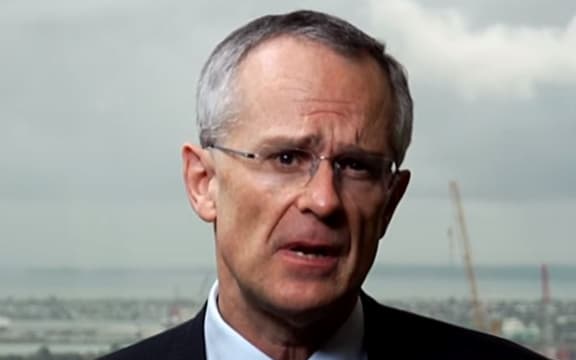


 The Duke of Cornwall, Patron of the Soil Association, marked the 10th anniversary of the Innovative Farmers programme and learned more about how it’s helping farmers adopt more sustainable practices.
The Duke of Cornwall, Patron of the Soil Association, marked the 10th anniversary of the Innovative Farmers programme and learned more about how it’s helping farmers adopt more sustainable practices. 

